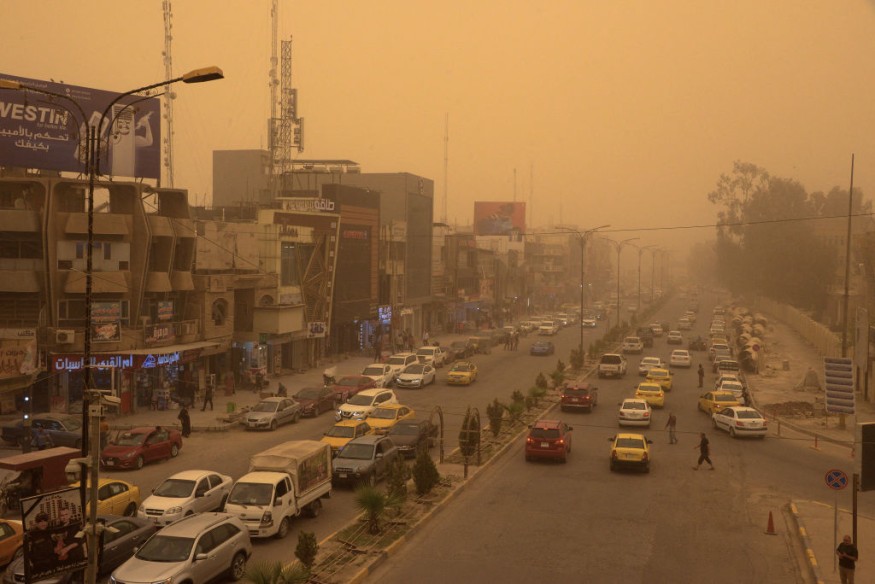Iraq has been swept by a gigantic dust storm for several days.
The storm has already brought dozens of people into the hospital due to respiratory health hazards.
The sand storm also caused the disruption of flights, including cancellations, serving the city of Erbil in the autonomous Kurdistan region.
A Product of Worsening Climate

A dust storm struck Baghdad and other cities when it formed in northern Iraq on Thursday, April 7.
Since then, it has continued to affect multiple governorates.
In central Iraq, buildings and vehicles were reportedly covered with dust and sand in Baghdad. In southern Iraq, the sand storm has reached as far as the city of Nasiriyah, Dhi Qar Governorate.
Although sand storms are common in Iraq, they have become more frequent over the years due to various weather and climatic factors, such as declining rainfall, desertification, and drought, according to Amer al-Jabri, director of Iraq's meteorological office, as cited by France 24 news.
What is a Dust Storm?
A dust storm or dust cloud is known as a haboob in the Middle East and North Africa (MENA).
This natural phenomenon is associated with the violent rotation of air containing various particles, such as grains of dust, sand, and rocks.
This is made possible when strong winds in arid and semi-arid regions are able to carry these particles suspended into the air, according to the World Meteorological Organization (WMO).
A sand storm has the capability to bring disruption to travel, and may even lead to death.
A dust storm is common in the MENA region but it also occurs in other parts of the world, including in China, Mongolia, and the United States.
In 2021, eight people were killed after a sandstorm caused a multi-vehicular pileup involving 22 cars between Salt Lake City and St. George in Utah, as per The New York Times.
Iraq: Climate Change and Water Resources
Various research suggested that climate change is responsible for the increasing intensity, frequency, and coverage of various weather and other natural events, including tropical cyclones, droughts, wildfires, droughts, and dust storms.
Experts have weighed in that Iraq is vulnerable to climate change due to its record-breaking low occurrence of rainfall and soaring temperatures over the years, as cited by France 24.
In addition, they have considered these natural disasters a threat to the socio-economic well-being of the country.
In a press release of the World Bank in November 2021, Iraq may experience a 20% drop in its water resources by 2050 due to climate change, leaving 33.3% of its irrigated land without water.
This is due to the predicted increase of temperature by 1 degree Celsius and the decrease in precipitation by 10% in the coming decades.
Temperatures in Iraq and other countries in the MENA region are relatively high, especially from April to August.
Due to its location near the Earth's equator, humid regions are at risk of experiencing aggravated heating effects caused by global warming.
Related Article: Skies Turned Orange as Dust Storm from Sahara Spreads to Spain, Across Europe
© 2025 NatureWorldNews.com All rights reserved. Do not reproduce without permission.





